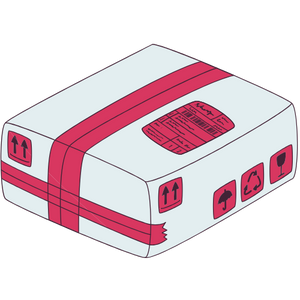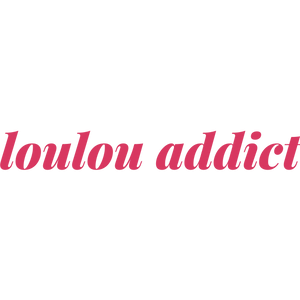Tampons = danger: is this statement true?
Are tampons dangerous? Myth or reality? Are these little pieces of cotton completely harmless? Dangers, risks, illnesses—do the tampons we use during our periods pose a threat to our health?
In recent years, news articles, investigations, and scandals have raised concerns about the ingredients used in some feminine hygiene products. The use of tampons has been called into question.
Are tampons really dangerous for our health? What are the real risks when using tampons? Is there a right way to use them? What other hygiene solutions can replace them? What are the healthier and more appealing alternatives for women and teens?
Louloucup is taking a closer look at this important question and trying to provide some answers.
Tampons: a widely used internal hygiene product, but not without risks
The tampon is—or rather, was—a leading hygienic and period product used by countless women and girls during their periods. It’s an internal hygiene product that you insert at the entrance of the vagina to block menstrual flow so it doesn’t leak out.
The small tampon expands on contact with fluid. Highly absorbent, it soaks up blood and can be removed with a string that sticks out.
Very convenient, many women use tampons for various reasons:
- for savings, a box of tampons is inexpensive,
- they don’t need to see blood, some can’t stand the sight of it,
- Tampons are ideal for swimming or a day at the beach, since they let you go in the water without worrying about leaks.
However, their composition has come under fire. Until very recently, brands and manufacturers were not required to disclose what tampons were made of. As a result, women used these products every month without knowing exactly what they were putting in their bodies.
Disposable tampons: a controversial and questioned composition
For several years now, we've known that harmful chemicals and toxic substances have been found in regular tampons and pads, posing risks to women's bodies and intimate health.
Traces of dioxins, pesticides, halogenated derivatives, phthalates, and polycyclic aromatic hydrocarbons (PAHs) have been found in tampons and pads. Chlorine dioxide is also used to bleach tampons.
Even tiny amounts of these harmful substances are concerning and can build up cycle after cycle in the vagina. The dangers are real for your vaginal flora and intimate health.
These alarming chemicals can have carcinogenic, mutagenic, or reprotoxic effects. They’re also considered endocrine disruptors.
The raw materials used in tampons are the main culprit. The cotton and cotton by-products used to make tampons are likely contaminated with pesticides.
Add to that the chlorine agents used to bleach tampons. The presence of PAHs (hydrocarbons) — usually found in diesel engines or cigarette smoke — can be explained by the manufacturing methods.
Tampons: What are the health risks?
The composition of tampons is worrying. What are the actual health risks? What are you risking by using a tampon?
Irritation, allergies, dryness
The chemicals found in tampons can disrupt the vaginal flora. For women who are more sensitive, this can cause irritation and burning sensations.
Wearing a tampon can also cause dryness and intimate or vaginal discomfort.
Tampons and Toxic Shock Syndrome (TSS)
Toxic shock syndrome (TSS) is a rare but serious infection that can occur in women during their period. This syndrome can only develop if the woman carries S. aureus bacteria. Not all women have this bacteria in their bodies.
This bacterium, part of the staphylococcus aureus family, can "activate" in a very specific environment: blood that has stayed too long in the vagina. This creates the perfect conditions for the bacteria to release TSST-1 toxins. These toxins attack organs and can have very serious consequences: vital organ damage, limb amputation, or even death.
As you can see, the bacteria thrive if blood isn’t removed regularly. A tampon left in the vagina for too long can cause toxic shock. That’s why it’s essential to change tampons very regularly—ideally every 4 hours.
The symptoms of toxic shock syndrome are similar to the flu or a stomach bug, so it’s important to be careful: headaches, dizziness, diarrhea, vomiting, high fever, and muscle pain.
Tampons: usage tips
A few tips for using a tampon safely:- read the instructions carefully;
- wash your hands thoroughly before and after inserting or removing a tampon;
- change them regularly and respect the recommended wear time : no more than 4 to 6 hours ;
- don’t sleep with a tampon in;
- don’t wear a tampon “just in case.” Wait until your period actually starts.
Effective, affordable, and practical alternatives to tampons
Even though tampons seem unbeatable despite the scandals, there are just as practical alternatives! Washable sanitary pads, period underwear, and menstrual cups are sustainable, responsible, healthy, and eco-friendly options that are becoming more and more accessible.
These greener alternatives are not only more reliable and healthier for your body, but also truly effective and highly absorbent. With their fully transparent ingredients, organic, certified, and labeled materials, you’re making a more conscious, responsible, and body-friendly choice.
To pick the right protection, you first need to know yourself and your menstrual flow. This helps you choose the best products and the right absorbency level.
To help you find the best period underwear based on your profile, flow, and habits, you can check out our articles:
- How to choose your menstrual underwear?
- How do I know what my menstrual flow is like?
- Our comparison of the best Louloucup period underwear
Do you like internal protection and want to learn more about our Loulou menstrual cup made in France, super soft and easy to wear? You can find lots of information by reading our articles:
- Menstrual cup sizing: how to choose?
- What’s the story behind our Made in France menstrual cup?
- How do you use a menstrual cup?
To avoid any risk of TSS, say no to questionable substances, and finally respect your vaginal flora, say a big yes to sustainable and responsible protection.




























